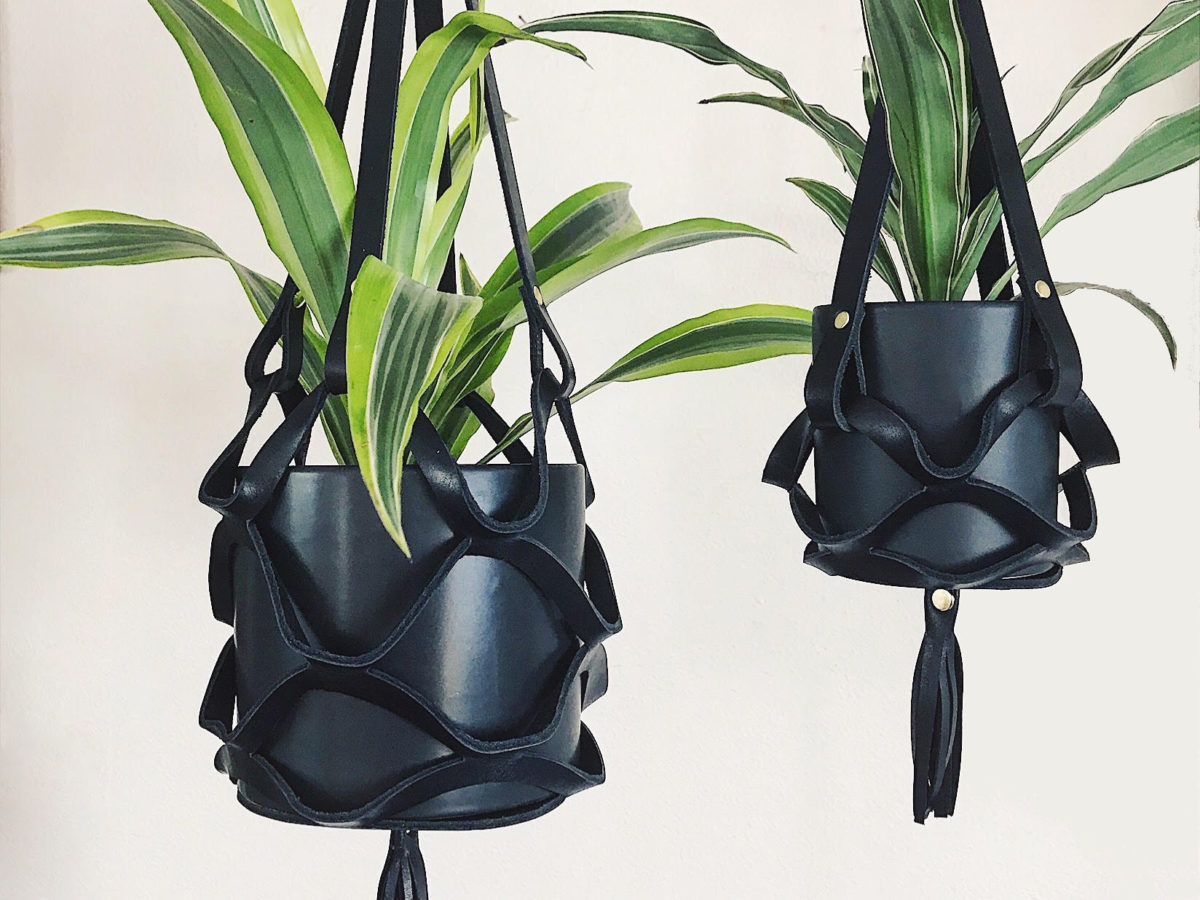Where to Source: Carnivorous Plant Resource
Purple Velvet Plant
https://www.instagram.com/p/B01V3nfAM6O/?utm_source=ig_web_button_share_sheet
Gaze into the Deep Purple of a passion velvet plant (Gynura aurantiaca), another interesting and easy houseplant. Soft purple hairs cover the leaves and stems like fine velvet, contrasted with funky-smelling orange blossoms. She’s not a killing machine like the pitcher plant, but you’ll love her, you’ll need her, and (as long as she blooms) you’ll seed her.
Planting Notes: Bright indirect light keeps them purple. Allow the top ¼ of the soil to dry between waterings, and feed weekly with diluted fertilizer during the active growing period.
Where to Source: Indoor Bonsai and Exotics
Queen of the Night
https://www.instagram.com/p/BurvjJGnFX4/?utm_source=ig_web_copy_link
If you’re looking for a fast-growing cactus that shines in the dark like witches at black masses, grow queen of the night (Epiphyllum oxypetalum). This gangly epiphyte is easy to train onto a moist, mossy pole. The queen’s blooms appear on only one summer night, typically between sundown and the witching hour. Her blossoms fade before dawn, leaving only her fragrant ghost behind as evidence of her passing.
Planting Notes: Medium light, warmth and high humidity (mist daily).
Where to Source: Suc it Up Buttercup
Thrash Metal (Metallica, Slayer, Megadeth, etc.)
Cylindrical Snake Plant
https://www.instagram.com/p/B0U2p_NHLQf/?utm_source=ig_web_button_share_sheet
Cylindrical snake plant (Sansevieria cylindrica) exemplifies the kind of metal you feared as a child, with its serpentine spikes writhing directly from fiendish soil like a bed of nails, or spreading like fingers reaching out of a grave. Like other snake plants, it’s actually pretty easy to grow, if given a sunny window and the occasional scowl.
Planting Notes: Bright to moderate light, allow soil to fully dry between waterings, and feed every three weeks during summer.
Where to Source: IKEA
Red Tree Peperomia
https://www.instagram.com/p/BtyxE2TAmrB/?utm_source=ig_web_copy_link
Red tree peperomia (Peperomia metallica) is a somber plant with blood-red stems and blackish leaves bearing a jagged silver slash down the midrib. Its inflorescence looks like white worms. And nothing else matters.
Planting Notes: Likes a bit of shade, allow to dry between waterings.
Where to Source: Steve’s Leaves
Black-Spined Aloe
https://www.instagram.com/p/BzCDyc4F_Wg/?utm_source=ig_web_button_share_sheet
Black-spined aloe (Aloe melanacantha) is covered in formidable spikes, and the leaves take on an angry red hue in droughty conditions. These brooding, slow-growing tanks do require caution when handling, but because they thrive on neglect, they’re a good choice for beginners. (They also look great with spiked wristbands.)
Planting Notes: Full sun to partial shade, drought tolerant but will be plumper and greener if watered every couple weeks.
Where to Source: Succulent Gardens
Black Metal (Venom, Celtic Frost, Mayhem, etc.)
Darth Vader Begonia
https://www.instagram.com/p/BfC0wpdHTmT/?utm_source=ig_web_copy_link
The Darth Vader begonia (yes, seriously—a.k.a. Begonia darthvaderiana) has waxy leaves as dark as your soul. It’s notoriously difficult to grow, but ‘Black Mamba,’ ‘Black Taffeta,’ and ‘Black Fang’ are easier dark begonias that will still have you scrying into a nightmarish void. Try Begonia xanthina var. ‘Lazuli’ for its crepe-y, black leaves.
Planting Notes: Bright, indirect light and room-temperature humidity yield best results for most rhizomatous species.
Where to Source: Mountain Orchids
‘Black Prince’ Coleus
https://www.instagram.com/p/BxD99xmgexO/?utm_source=ig_web_button_share_sheet
This terrifying ‘Black Prince’ coleus (Solenostemon scutellarioides ‘Black Prince’) looks like a lich and although it’s an easy-to-grow heavy metal houseplant, it will almost certainly eat your soul while you sleep.
Planting Notes: Grow in bright, filtered light with moist, rich soil.
Where to Source: Etsy
Black Bat Plant

Black bat plant (Tacca chantrieri) looks like a winged demon spewing strings of bile from its face, which is to say this plant is stunning. With blackish purple flowers 12” across, it’s easily the most emo member its large family (the Dioscoreaceae, which includes yams), even if it’s a bit on-the-nose as a heavy metal houseplant.
Planting Notes: Needs bright light and humidity to bloom, so keep it on a tray of pebbles or use a humidifier.
Where to Source: Rare Plants
Hair Metal (Cheap Trick, Warrant, Van Halen, etc.)
Eyelash Begonia, Peacock Plant, and Lipstick Plant
https://www.instagram.com/p/ByJwwalgVMr/?utm_source=ig_web_button_share_sheet

Photo by Elizabeth Fernandez / Getty Images
https://www.instagram.com/p/B0d3xuZAVbq/?utm_source=ig_web_button_share_sheet
Hey, I’m not here to judge whether or not hair rock plants are truly heavy metal houseplants, but they definitely shred the gnar. Pictured above in this order, lipstick plant (Aeschynanthus radicans), peacock plant (Calathea makoyana), and eyelash begonia (Begonia bowerae ‘Tiger Paws’) all have similar growth requirements, so collect them all for a Damn Yankees-style supergroup. Spandex and leopard print pots are optional.
Planting Notes: Medium to low light, allow to dry out between waterings.
Where to Source: Pistils Nursery, Plant Lust
Death Metal (Carcass, Cannibal Corpse, etc.)
Carrion Flower and Voodoo Lily
https://www.instagram.com/p/BzoNjTdH4be/?utm_source=ig_web_button_share_sheet
https://www.instagram.com/p/BCwjuy-i02J/?utm_source=ig_web_button_share_sheet
Plants that smell like dead bodies are supreme examples of heavy metal houseplants. Carrion flower (Orbea variegata) is a spiny, vicious-looking plant with a flower that looks like a rotting starfish and which emits the stench of death. Voodoo lily (Typhonium venosum), one of the “stinky aroids,” also delightfully reeks of cadavers but looks even more like a heavy metal houseplant. If you like Gwar (and have a greenhouse and can wait twenty years), try your hand at growing corpse flower, because its fetid odor is pretty on-brand.
Planting Notes: Bright afternoon sun, allow to dry between waterings.
Where Source: Annie’s Annuals
Fanged Pitcher Plant
https://www.instagram.com/p/Bz_4rbyFqe4/?utm_source=ig_web_button_share_sheet





